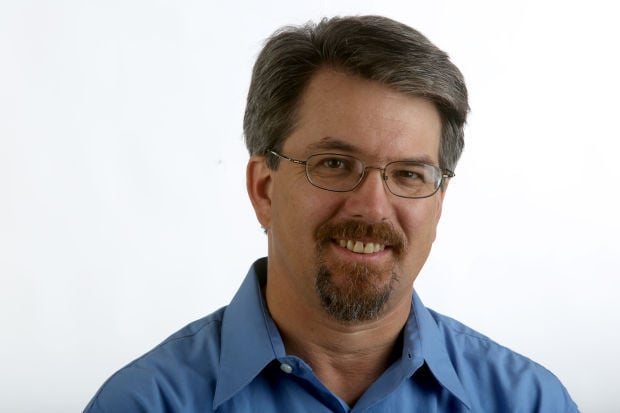Gov. Doug Ducey rightfully patted Arizona on the back last week for its longstanding efforts to ensure we have enough water.
“Thanks to tough, pragmatic and inspiring leaders of our past, Arizona is sufficiently prepared to face the challenges that exist as we enter our 16th year of drought in the West,” he told about 450 business and government leaders in Tempe on Tuesday.
“Without a doubt,” he went on to say, “Arizona is a national leader — if not the nation’s leader — in proactive water conservation and management.”
True enough, and yet a 45-minute drive southeast of Tucson shows how tenuous that title is — and how tempting short-term thinking about water remains. A 28,000-home development in Benson could add up to 70,000 more people to the town’s current population of around 5,000, all of them dependent on the pumping of groundwater.
Nobody knows, and nobody is required to find out, what the effects of that pumping will be on the nearby San Pedro River, Kartchner Caverns or the broader watershed. That does not sound like proactive water management to me.
In most of the state, including Benson, cities and developers need to show they have an “adequate” water supply to last 100 years in order to get the go-ahead for developments from the Arizona Department of Water Resources.
Fundamentally, that means the existing and projected use of water won’t lower the water table to more than 1,200 feet below ground.
As my colleague Tony Davis has reported, the state water resources department and U.S. Geological Survey planned to do three studies on the hydrology and geology of the middle San Pedro basin, the area in which Benson sits, to see how the water system works in the area. They’ve done two of the studies — the second one came out May 5 — but the crucial third part has gone undone.
That’s because the Legislature cut the water department’s budget by more than 50 percent in 2010. It doesn’t have the money anymore to do the approximately $1 million in work to create a computer model of the area’s hydrology.
I asked Jim Leenhouts of the USGS what the computer model would tell us.
“You can’t touch the aquifer and observe it directly,” explained Leenhouts, director of the survey’s Arizona water science center. “The model allows you to ask, ‘What would happen if. ...’ It allows you to make predictions.”
In other words, we could find out what would happen to the groundwater and river if 70,000 more people start drinking from them.
Benson’s most recent submissions to the water department say the water level has averaged about 665 feet below the surface in recent years, as the city pumped 843 acre-feet per year from the ground. They predict that with the development of the big housing project, pumping will increase to 12,371 acre-feet per year, but the groundwater level will still only drop to 796 feet below the surface over the next century.
Those figures keep Benson well within the 1,200-foot state limit. Since the state’s regulations don’t require the city or developer to show what the effect will be on the San Pedro River or nearby Kartchner Caverns, that suggests the laws simply aren’t strong enough in that area.
In contrast, most of the population of Arizona — including the Phoenix and Tucson areas, Prescott, Pinal County and Santa Cruz County — lives in Active Management Areas. These area have stricter rules for groundwater pumping.
Santa Cruz County, the last of these to be established, adheres to the strictest standard — “safe yield.” As Mark Myers, a longtime Tucson water-policy and economics consultant, explained to me Friday, safe yield means the same amount of water must be put into the aquifer as taken out, and there must be no net decline in the groundwater level.
Simply put, the mega project in Benson would be much more difficult or impossible just over the county lines in Pima and Santa Cruz County.
The stark boundaries, Myers said, are “encouraging people to develop just outside an Active Management Area.”
I asked developer Mike Reinbold several questions about his development via email. In his answers, he wrote, “The Villages at Vigneto is developing Best Management Practices for water and storm water conservation that will minimize impacts on surface and groundwater.”
But he showed no interest in the planned computer modeling of the hydrology of the area.
“ADWR is the sanctioned governing authority that determines the methods by which adequate water supply is determined,” he wrote. “We support their methods of determination.”
I’m not surprised he doesn’t want to do more than is required. And yet Ducey himself seemed to urge thinking that goes beyond short-term self-interest.
He warned: “We should always be proactively finding solutions and fighting for future certainty in our water supplies. Just like our predecessors. When it comes to this issue, we must never succumb to the idea that we are ‘good for the moment’ — because as history has taught us, ‘the moment will pass.’ ”
Thankfully, there are those fighting to ensure longer-term thinking about the Benson project. The Audubon Society has asked the Army Corps of Engineers to reconsider a permit it issued for the project back in 2006, as my colleague Davis reported Monday.
The group argued that the project Reinbold is proposing is larger than the one the corps approved then. It pointed out that the Environmental Protection Agency had warned the corps that even the smaller proposed development of that time risked drying up the San Pedro River.
Note that the Audubon Society is appealing to a federal agency for help. In places like Benson, even Arizona’s vaunted forward thinking about water doesn’t seem to offer much protection.





